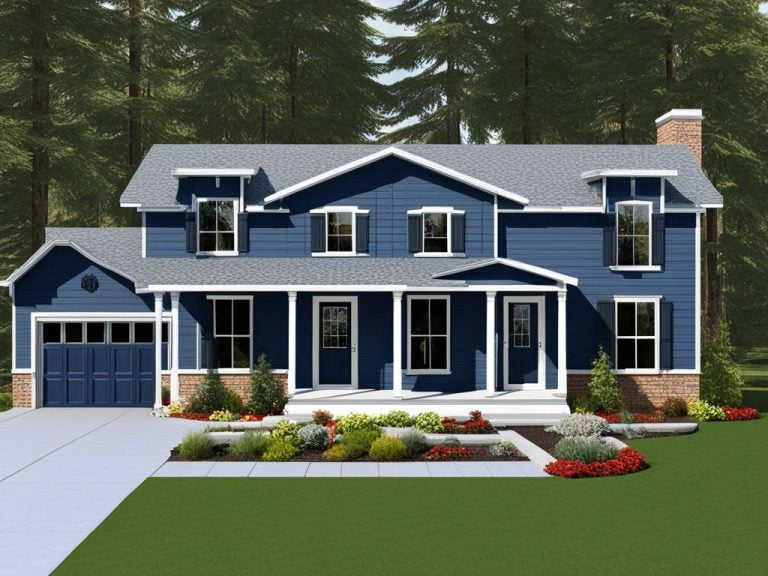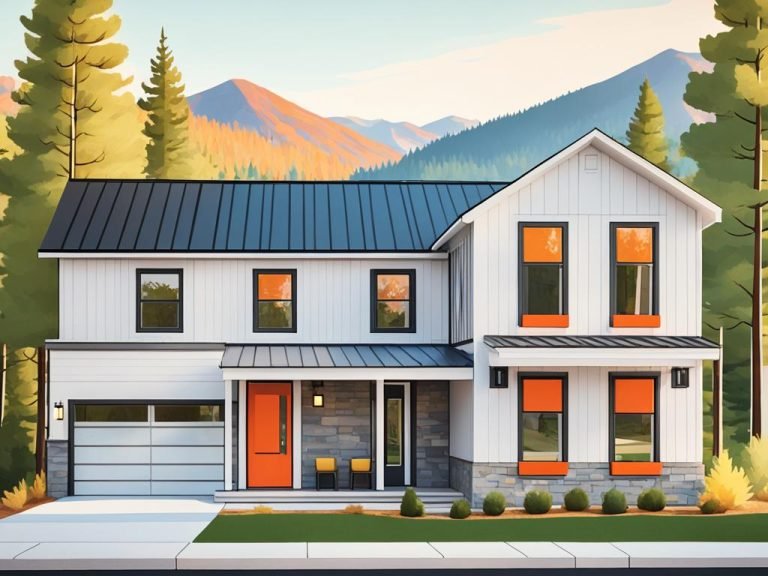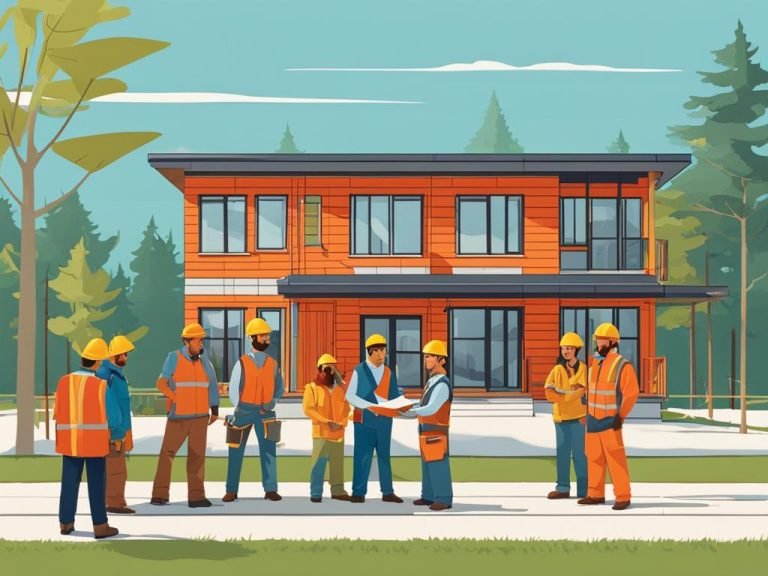Modular Housing Construction Insights
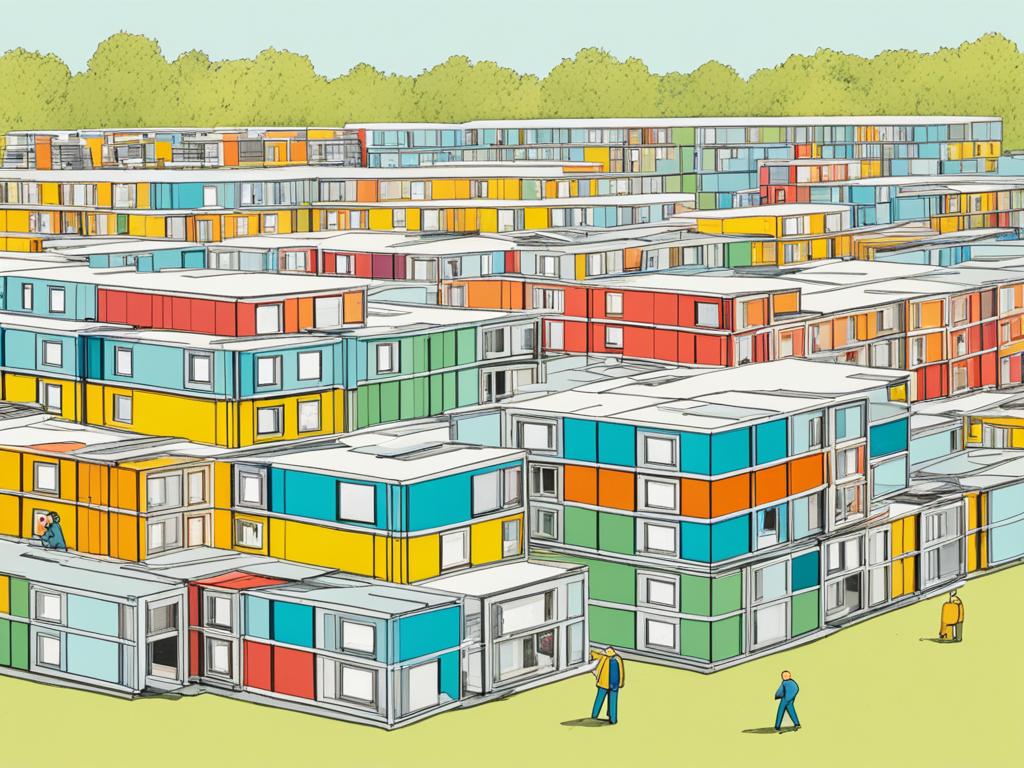
Modular construction, also known as prefabricated construction, is an innovative building method that involves manufacturing building components in factories and assembling them on-site. This off-site construction approach offers numerous benefits, including increased productivity, reduced construction timelines, and cost savings. With advancements in technology, the modular construction industry is gaining significant interest and investment, with the potential to revolutionise the way we build and address housing crises. According to research, modular projects have already proven to accelerate project timelines by 20 to 50 percent and can potentially yield more than 20 percent in construction cost savings. The market value for modular construction in Europe and the United States alone could reach £130 billion by 2030.
Key Takeaways:
- Modular construction offers increased productivity and cost savings.
- The market value for modular construction could reach £130 billion by 2030.
- Modular construction has the potential to revolutionise the construction industry.
- Advancements in technology are driving the growth of modular construction.
- Modular construction can address housing crises and provide sustainable housing solutions.
The Potential Impact of Modular Construction
The modular construction approach has the potential to bring about a profound transformation in the construction industry. As one of the largest sectors globally, a shift towards modular construction can significantly impact global economic productivity. The use of modular techniques has already proven to accelerate project timelines and reduce costs. Additionally, modular construction has the potential to address housing crises in various markets by providing faster and cost-effective solutions.
Modular construction offers a productivity boost by leveraging off-site manufacturing processes. Building components are fabricated in controlled factory environments, allowing for greater efficiency and quality control. This streamlined approach reduces construction timelines and enhances project delivery, ultimately saving time and money.
In the face of housing crises, where demand outpaces supply, modular construction can offer a viable solution. By utilizing factory-built houses and modular building systems, the industry can deliver sustainable and affordable housing at a faster pace. This not only addresses the immediate needs of communities but also helps to stabilize the market and alleviate the pressure on housing affordability.
Furthermore, the market value for modular construction is projected to reach £130 billion by 2030 in Europe and the United States alone, highlighting the significant growth potential of this industry. The cost savings associated with modular construction, coupled with its ability to deliver projects efficiently, make it an attractive choice for developers and investors alike.
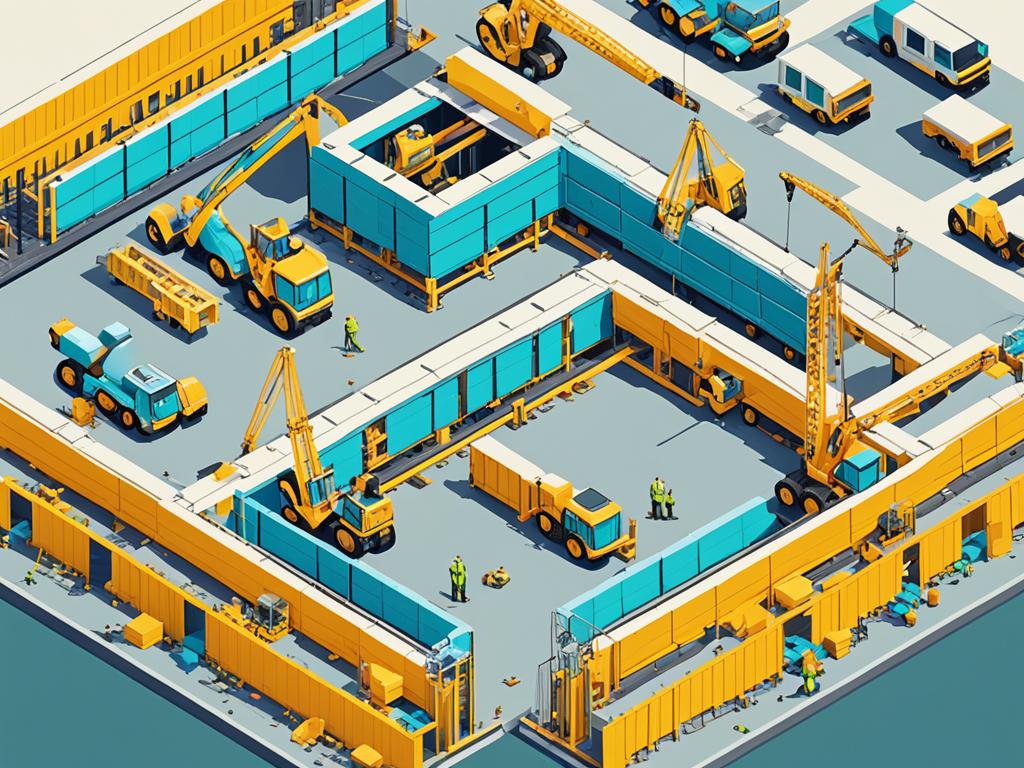
This image illustrates the modular construction process, showcasing the efficient assembly of prefabricated building components. The integration of this image helps to visually demonstrate the concept of modular construction, further enhancing the understanding of its potential impact.
In conclusion, modular construction offers a productivity boost, addresses housing crises, and presents cost-saving opportunities. Its potential to revolutionize the construction industry is backed by its track record of success and projected market value. As more stakeholders recognize the benefits of modular construction, it is poised to become the preferred method of building, shaping the future of construction and meeting the needs of a rapidly evolving world.
Pockets of Promise in Modular Construction
While modular construction has gained sustainable traction in markets like Japan and Scandinavia, it has faced challenges in wider adoption in countries like the United Kingdom and the United States. However, there are pockets of promise for modular construction, especially in markets where there is unmet demand for housing and labour shortages.
For example, in areas like Australia’s East Coast, Germany’s major cities, the southern part of the United Kingdom, and the US West Coast, the intersection of labour shortages and high demand for housing makes modular construction particularly relevant.
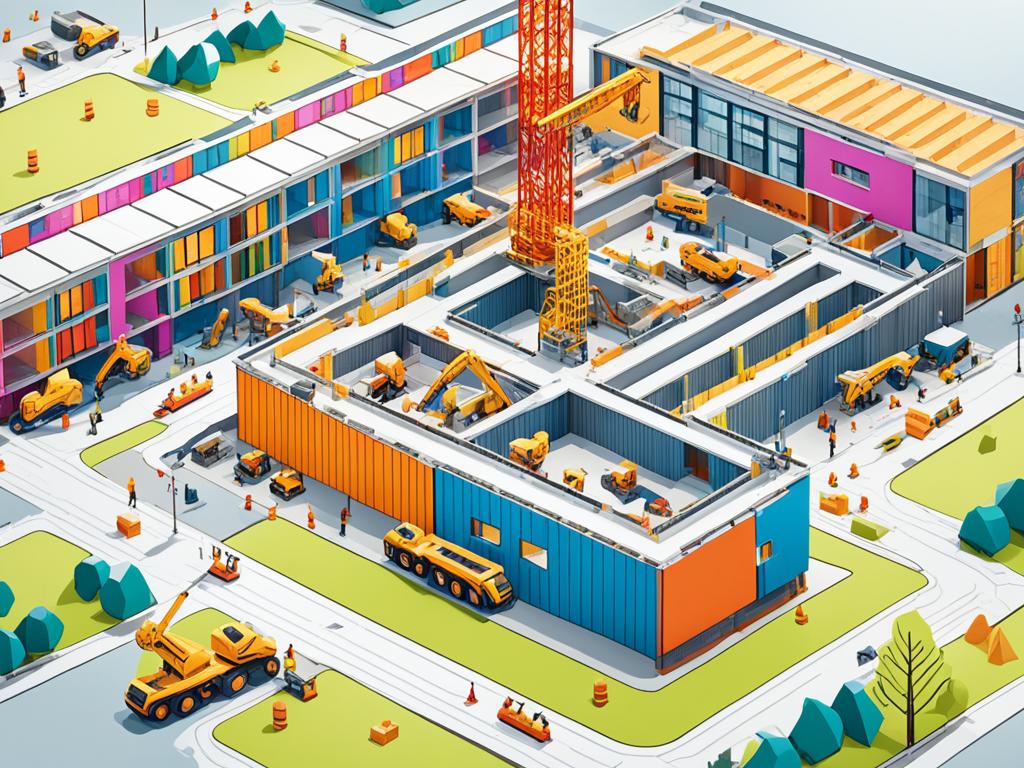
Why Modular Construction?
Modular construction offers a solution to the pressing housing needs in these regions. With prefabricated housing and modular construction, it is possible to overcome labour shortages and meet the demands for affordable, quality homes. By manufacturing the building components off-site and assembling them on-site, the construction process can be expedited, and housing projects can be completed faster.
- Modular construction allows for simultaneous construction and manufacturing, reducing the overall construction timeline.
- Labour shortages are mitigated as fewer workers are required on the construction site.
- Quality control is enhanced through precise factory-controlled manufacturing processes.
- Economies of scale can be achieved by producing modules in bulk, leading to cost savings.
Modular construction not only addresses the immediate housing needs but also offers a sustainable and efficient solution for the future. With the potential to reduce construction waste, optimize material usage, and incorporate eco-friendly features, modular construction aligns with environmental sustainability goals.
As the demand for affordable housing continues to rise, governments and developers are exploring modular construction as a viable solution to bridge the gap between supply and demand. By capitalizing on the benefits of prefabricated housing and modular construction, these regions can effectively tackle the housing crises and labour shortages, creating a stronger and more sustainable built environment.
Challenges and Solutions in Modular Construction
Modular construction faces various challenges that can impact its widespread adoption. One challenge is overdesign, where standardized modules may not be optimised for specific applications, leading to higher material costs. To address this, design-to-value techniques can be used to optimise module features and material specifications.
Inefficient installation can also hinder the benefits of modular construction, and companies are investing in project management capabilities to ensure smooth execution. By focusing on installation efficiency, time and cost savings can be achieved, enhancing the overall value of modular construction.
Additionally, the capital-intensive nature of modular construction requires effective working capital management and strategic partnerships to manage cash flow. By carefully planning and monitoring capital requirements, companies can minimise financial strain and maintain stability throughout the construction process.

Design Optimization Solutions
- Implement design-to-value techniques to optimize module features and material specifications
- Ensure standardized modules are adaptable to specific applications
- Collaborate with architects and engineers to create custom designs
Installation Efficiency Solutions
- Invest in project management capabilities to streamline installation processes
- Train installation teams to ensure proficiency and effectiveness
- Employ modular-specific tools and equipment to enhance efficiency
Capital Requirements Solutions
- Develop effective working capital management strategies
- Explore financing options and partnerships to secure necessary funds
- Optimize production and procurement processes to reduce capital expenditure
Manufacturing Pipelines Solutions
- Utilize advanced analytics tools to forecast demand and align production capacities
- Establish long-term partnerships with reliable suppliers to ensure a steady supply of materials
- Collaborate with industry stakeholders to develop standardized manufacturing processes
By implementing these solutions, the challenges in modular construction can be effectively addressed. Design optimization, installation efficiency, capital requirements, and manufacturing pipelines are key areas to focus on for successful and scalable modular construction projects.
The Modular Construction Market
The global modular construction market is witnessing significant growth, with a projected value of £140,083.56 million by 2028, exhibiting a Compound Annual Growth Rate (CAGR) of 5.04% from 2022 to 2028. This surge in the market can be attributed to various factors, including the increasing need for cost-effective and sustainable housing solutions, advancements in technology, and a growing awareness of the benefits offered by modular construction.
When it comes to leading manufacturers in the market, several prominent players have emerged. Companies such as Laing O-Rourke, Clayton Homes Inc., Sekisui House, Skanska AB, and more have solidified their position as industry leaders, driving innovation and setting industry standards. These manufacturers are known for their design innovation, efficient manufacturing processes, and strategic collaborations.

The modular construction market is a highly competitive landscape, with players continuously striving to stay ahead. Their focus on design innovation and efficient manufacturing processes allows them to deliver high-quality modular constructions that meet the diverse needs of customers. Strategic collaborations with other stakeholders and industry partners also contribute to their success in this dynamic market.
Conclusion
The modular construction industry is poised for growth and has the potential to disrupt the construction industry and reshape the way we build. While facing challenges in adoption and integration within the construction ecosystem, modular construction companies can overcome these obstacles by optimising design, enhancing project management capabilities, managing capital requirements, and developing strategic partnerships. As the industry evolves, collaboration and alignment between modular construction players and developers, contractors, and other stakeholders will be crucial for success. The future prospects for the modular construction industry in the United Kingdom are promising, with significant potential impact on the construction ecosystem.
By embracing this innovative approach, the modular construction industry can deliver increased productivity, cost savings, and sustainable housing solutions. As demand for efficient and affordable housing continues to rise, modular construction presents a viable solution that can address the housing crisis and provide high-quality homes. With a focus on continuous improvement and innovation, the industry can further enhance its credibility and gain wider acceptance across the construction sector.
As we look to the future, the modular construction industry in the United Kingdom holds immense potential for growth, with a positive impact on the construction ecosystem. By leveraging advanced technologies, optimizing manufacturing processes, and fostering collaboration, the industry can revolutionize the way we build, creating a more sustainable and efficient construction landscape. With its promising future prospects and ability to meet evolving customer demands, the modular construction industry is well-positioned to thrive in the years to come.
FAQ
What is modular construction?
Modular construction, also known as prefabricated construction, is a building method that involves manufacturing building components in factories and assembling them on-site.
What are the benefits of modular construction?
Modular construction offers numerous benefits, including increased productivity, reduced construction timelines, and cost savings.
How does modular construction address housing crises?
Modular construction provides faster and cost-effective housing solutions, making it a potential solution for housing crises in various markets.
Where is modular construction particularly relevant?
Modular construction is particularly relevant in markets with unmet demand for housing and labor shortages, such as Australia’s East Coast, Germany’s major cities, the southern part of the United Kingdom, and the US West Coast.
What are the challenges in modular construction?
Challenges in modular construction include overdesign, inefficient installation, capital requirements, and maintaining steady manufacturing pipelines.
How can the challenges in modular construction be addressed?
Challenges in modular construction can be addressed through design optimization, enhanced project management capabilities, effective working capital management, and strategic partnerships.
What is the market size for modular construction?
The global modular construction market is projected to reach a value of 0,083.56 million by 2028, with a CAGR of 5.04% from 2022 to 2028.
Who are the leading manufacturers in the modular construction market?
Leading manufacturers in the modular construction market include Laing O-Rourke, Clayton Homes Inc., Sekisui House, Skanska AB, and more.
What is the future outlook for modular construction?
The future prospects for modular construction are promising, with the potential to disrupt the construction industry and reshape the way we build.
Source Links
- https://www.mckinsey.com/capabilities/operations/our-insights/modular-construction-from-projects-to-products
- https://www.mckinsey.com/capabilities/operations/our-insights/making-modular-construction-fit
- https://www.linkedin.com/pulse/modular-construction-market-insights-envisioning?trk=pulse-article_more-articles_related-content-card

